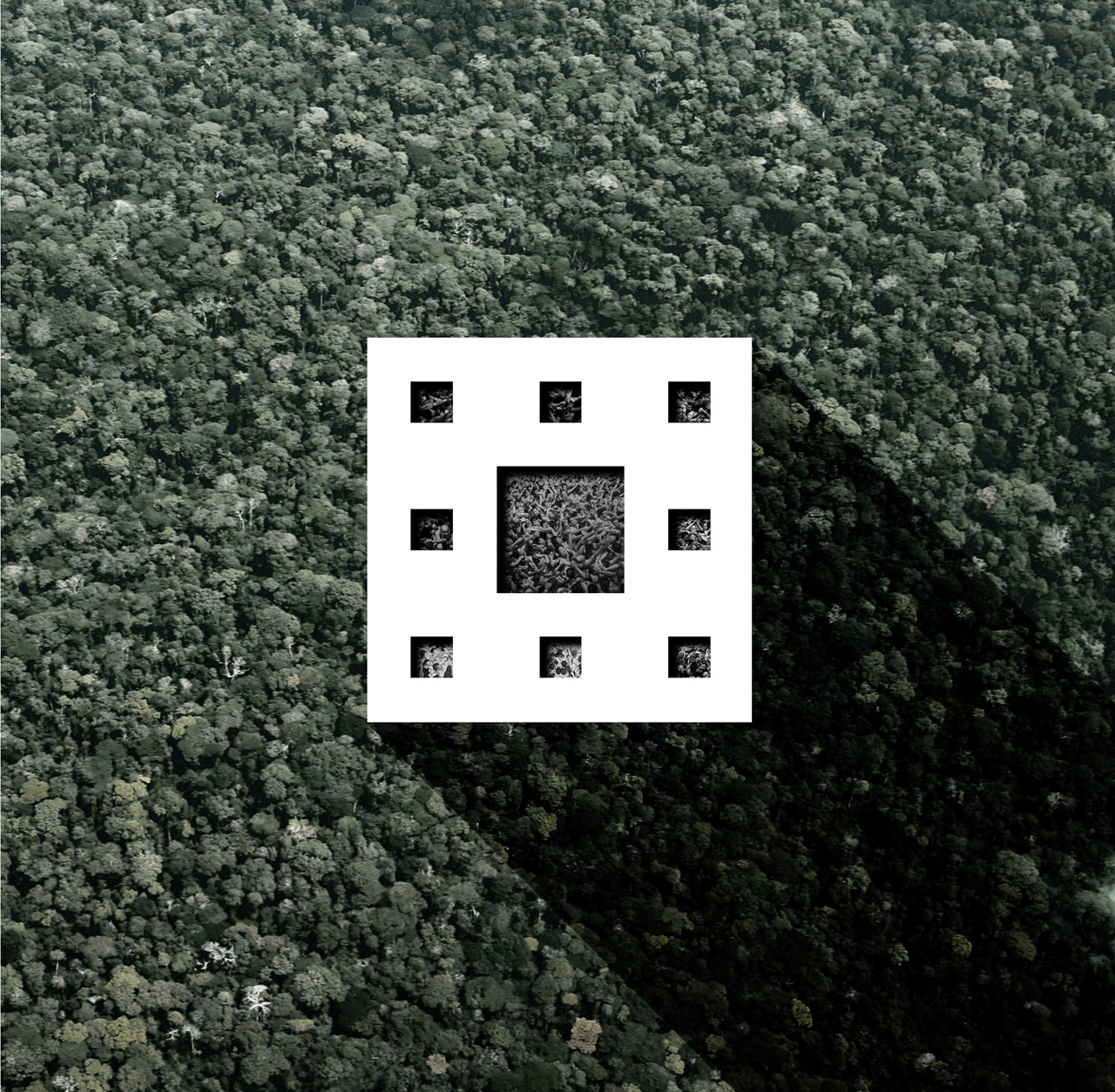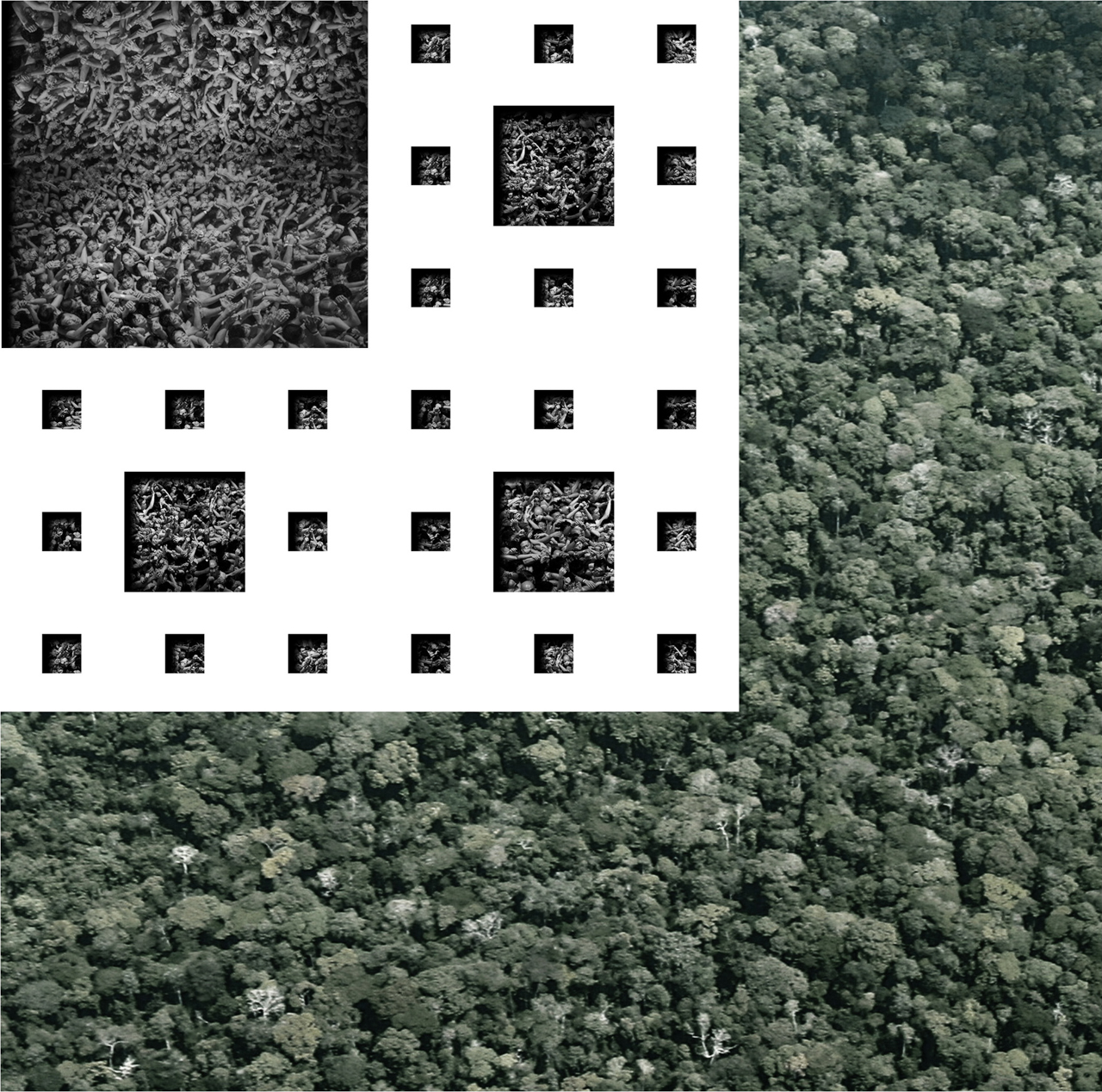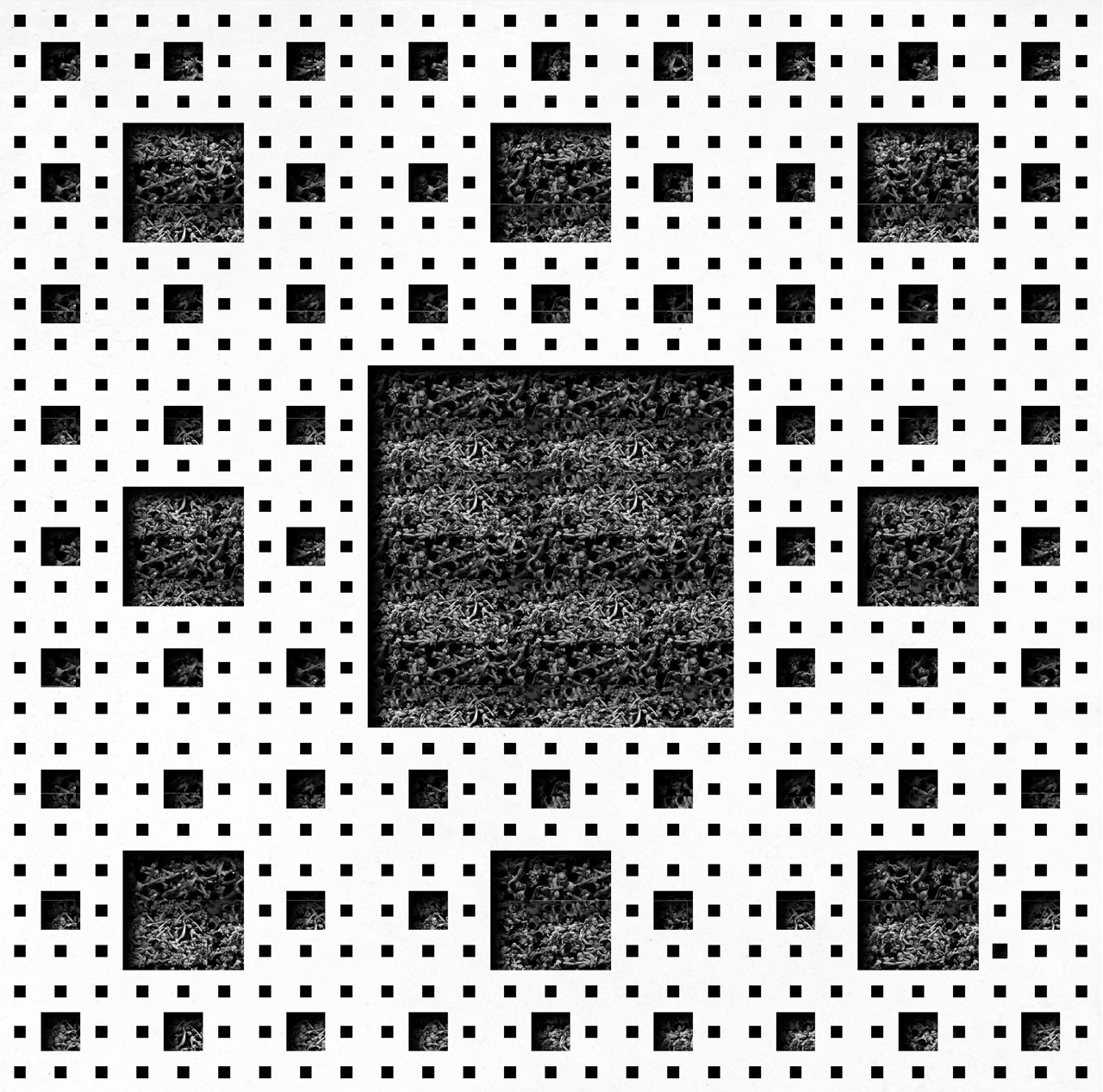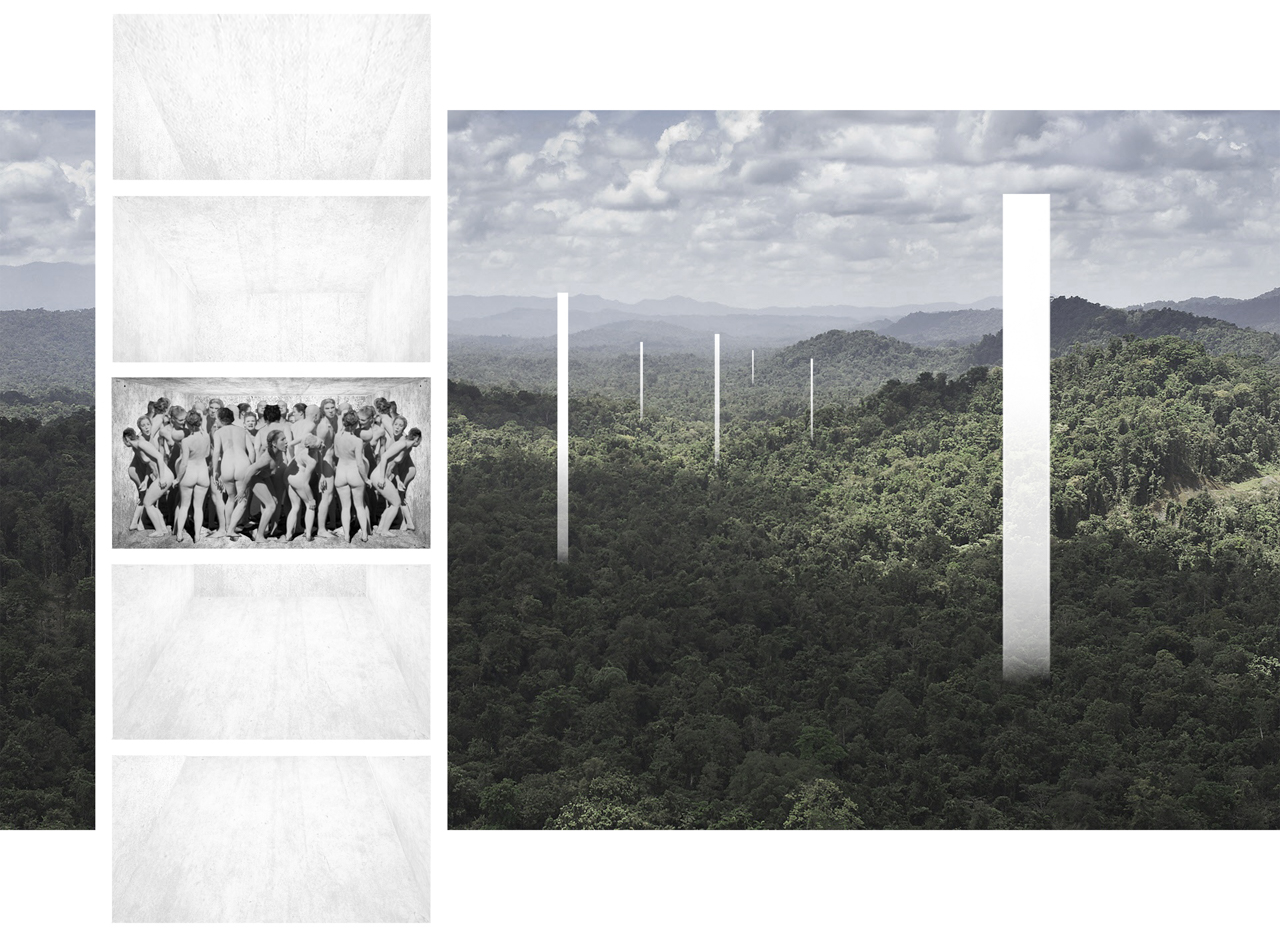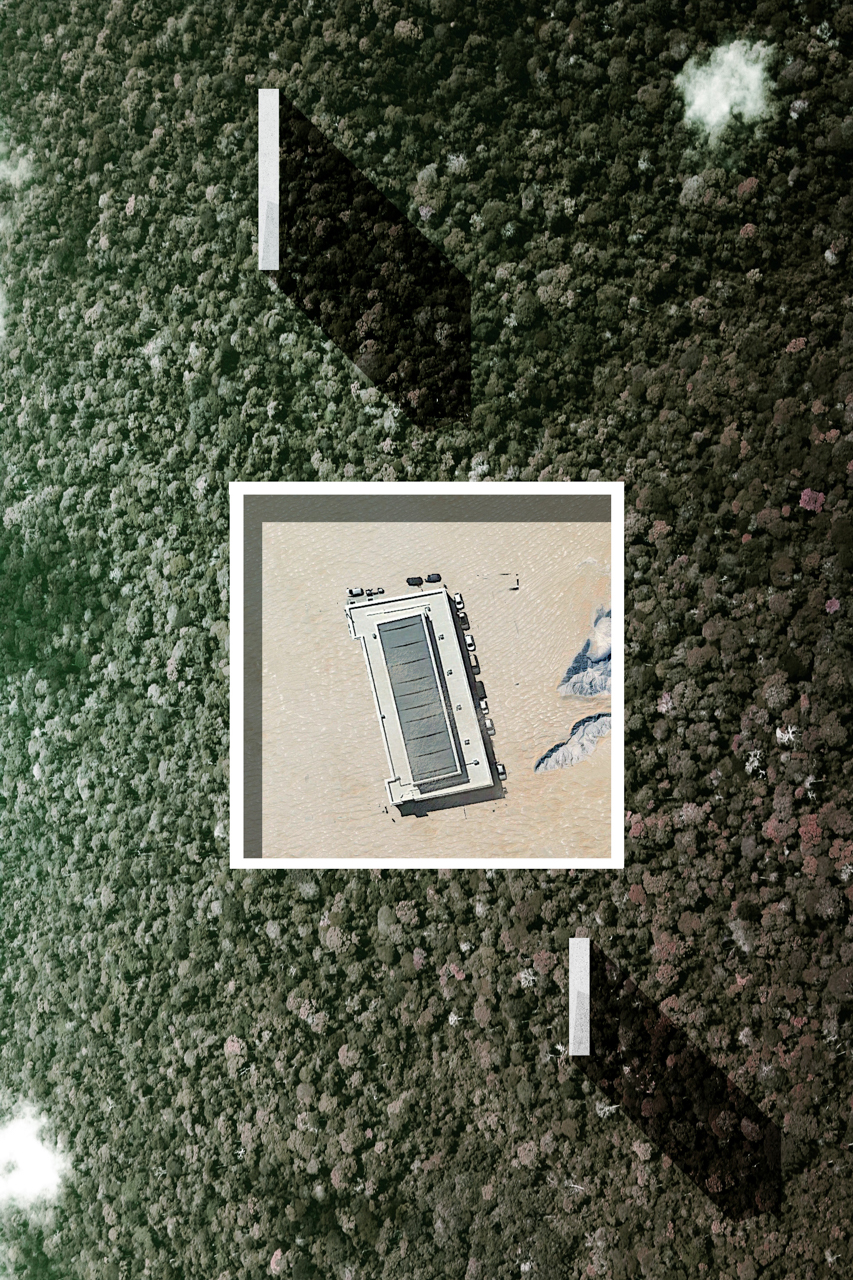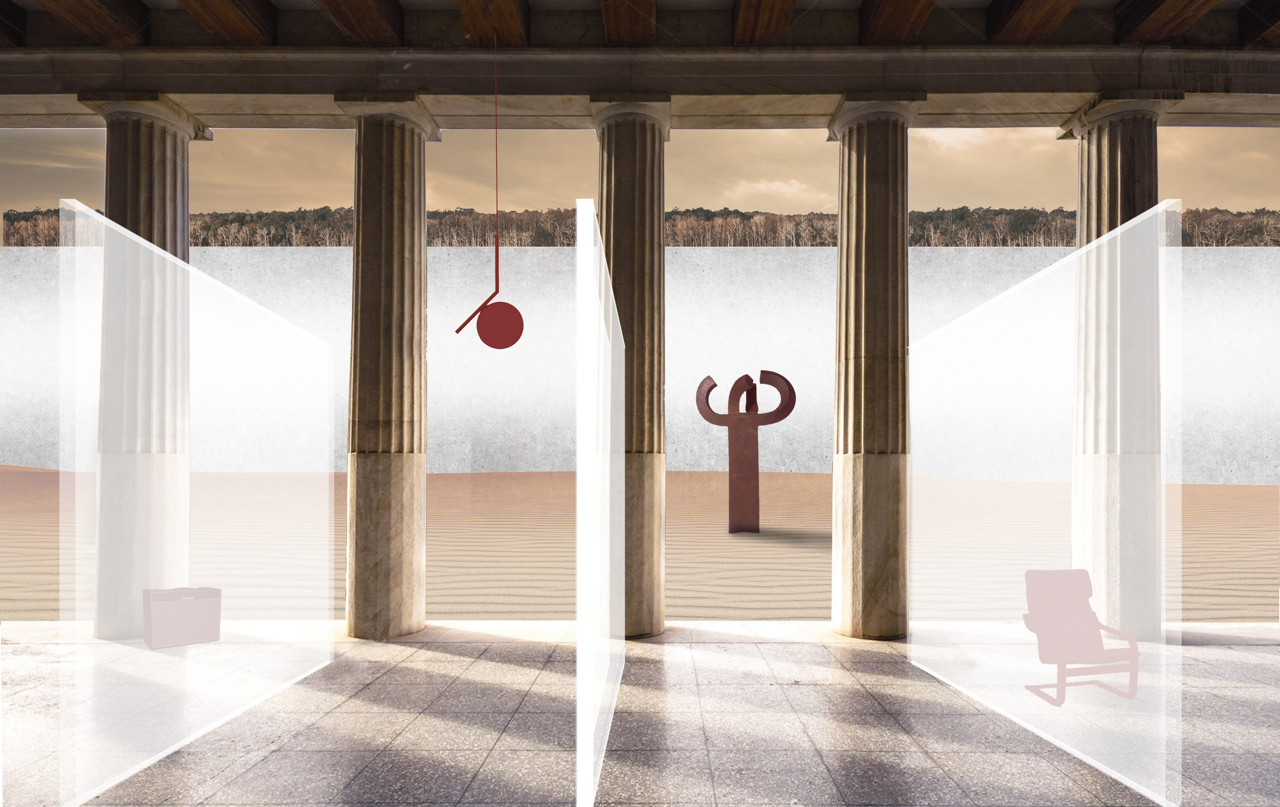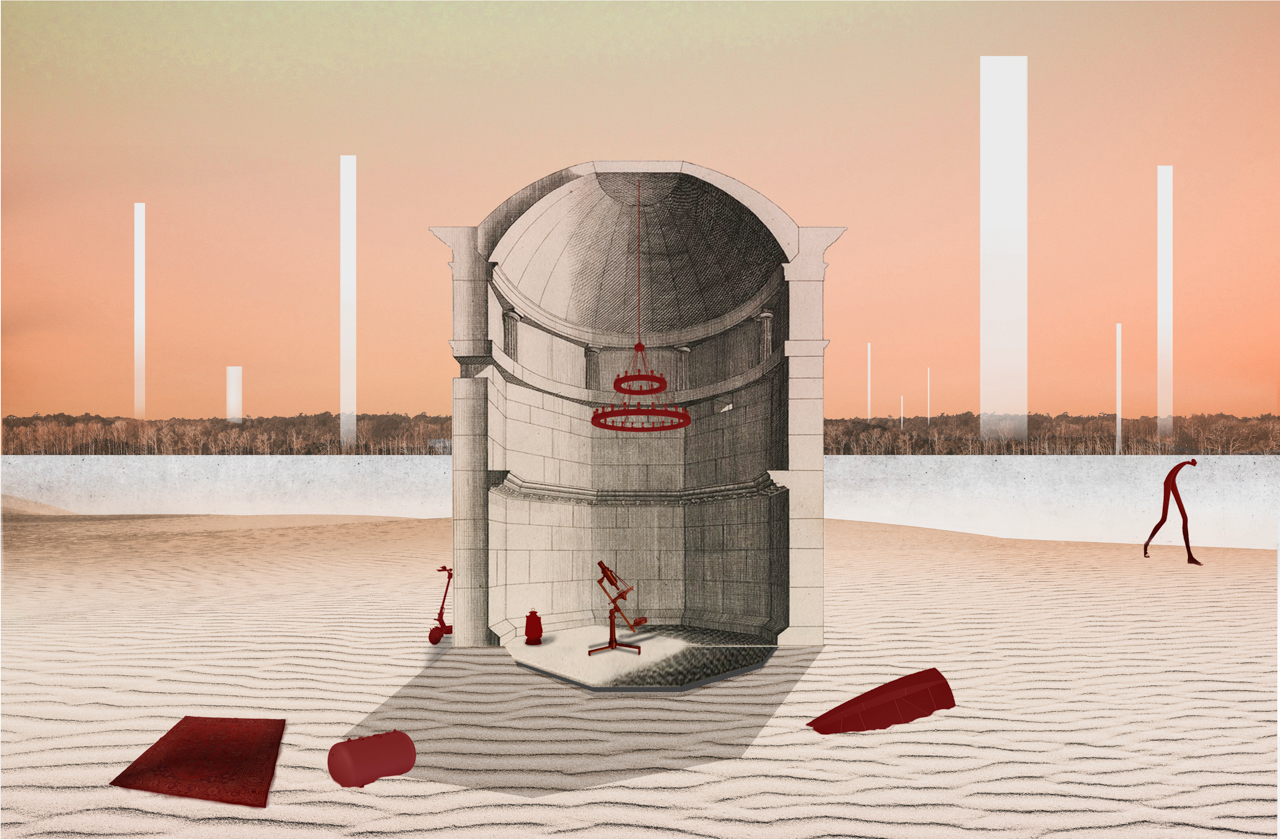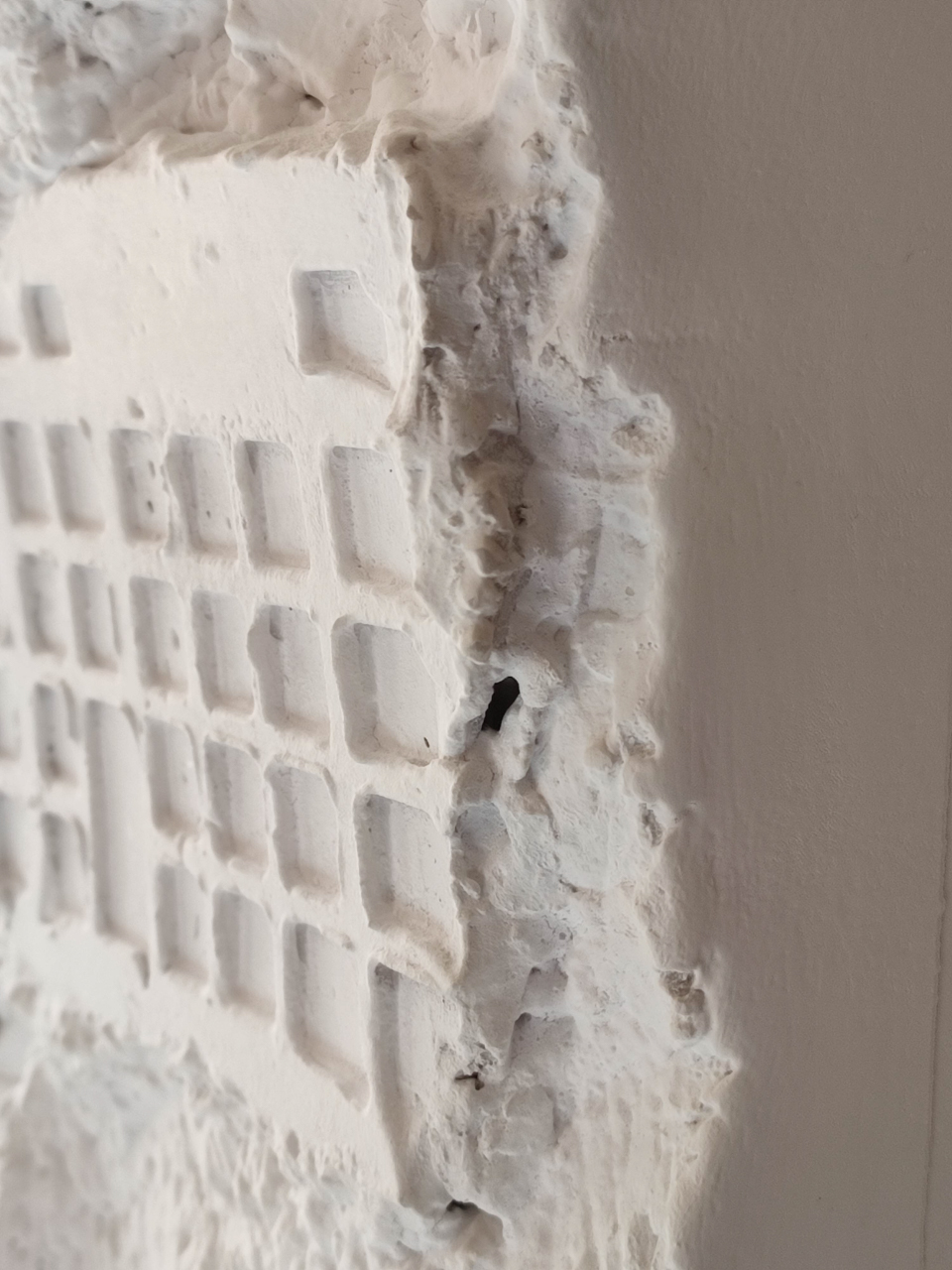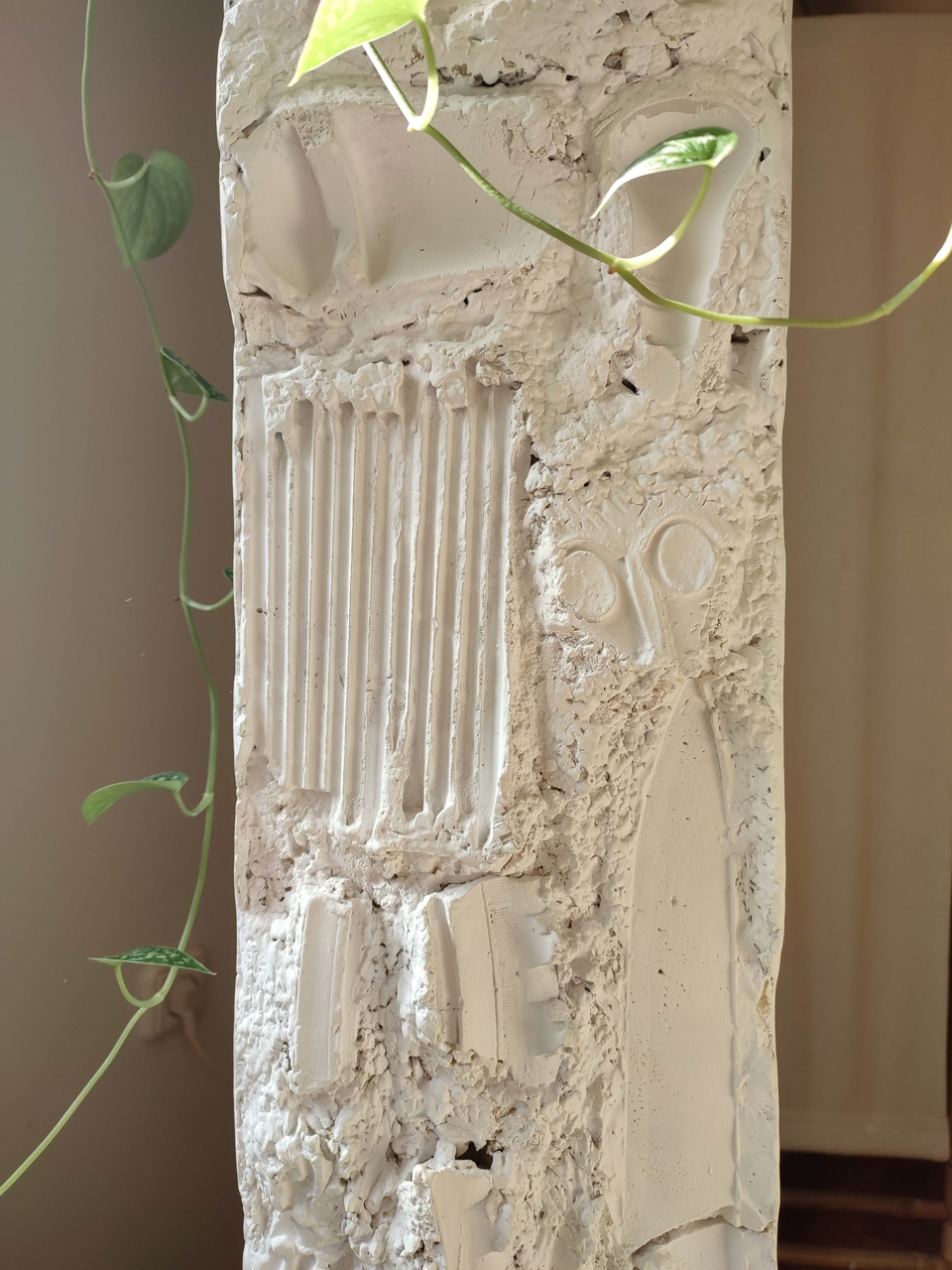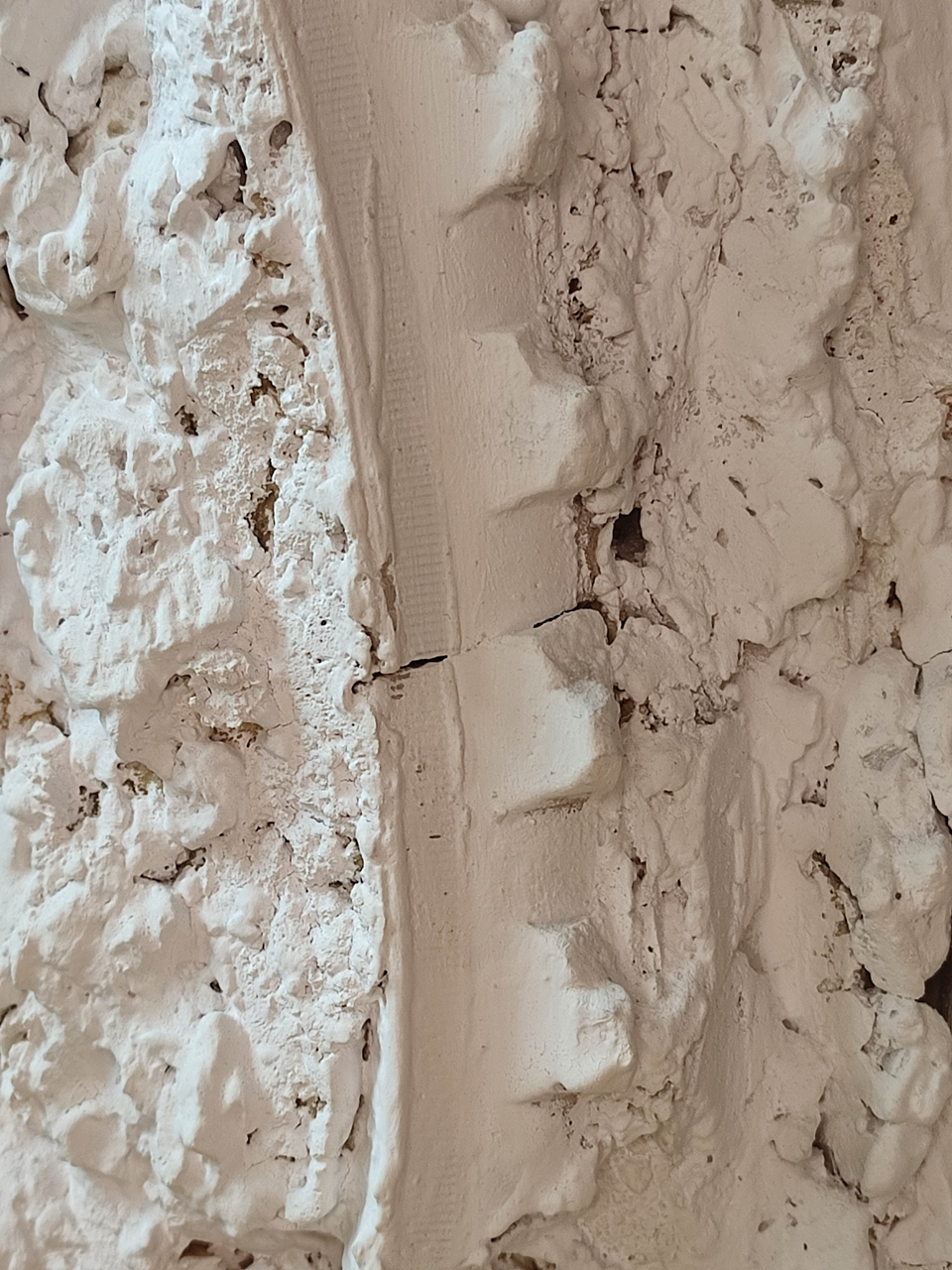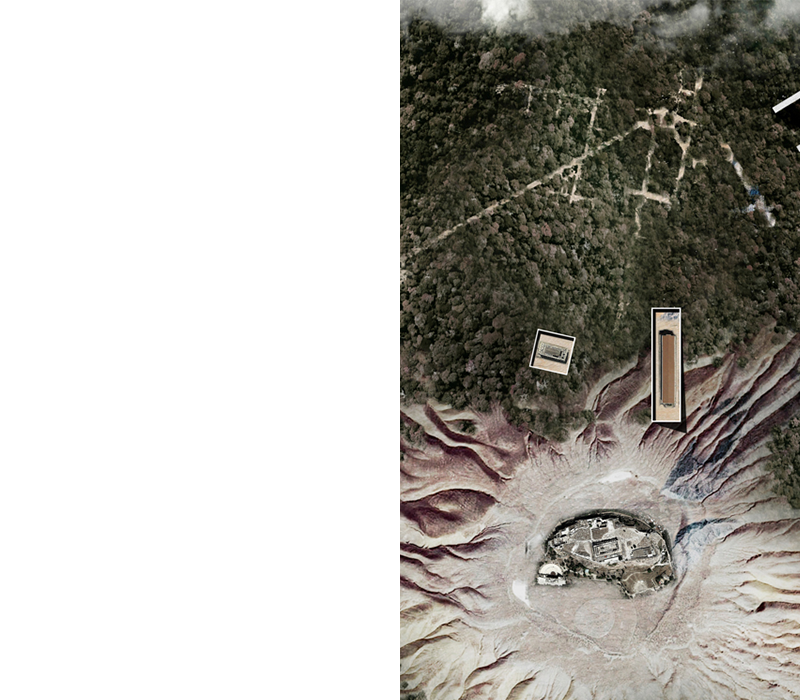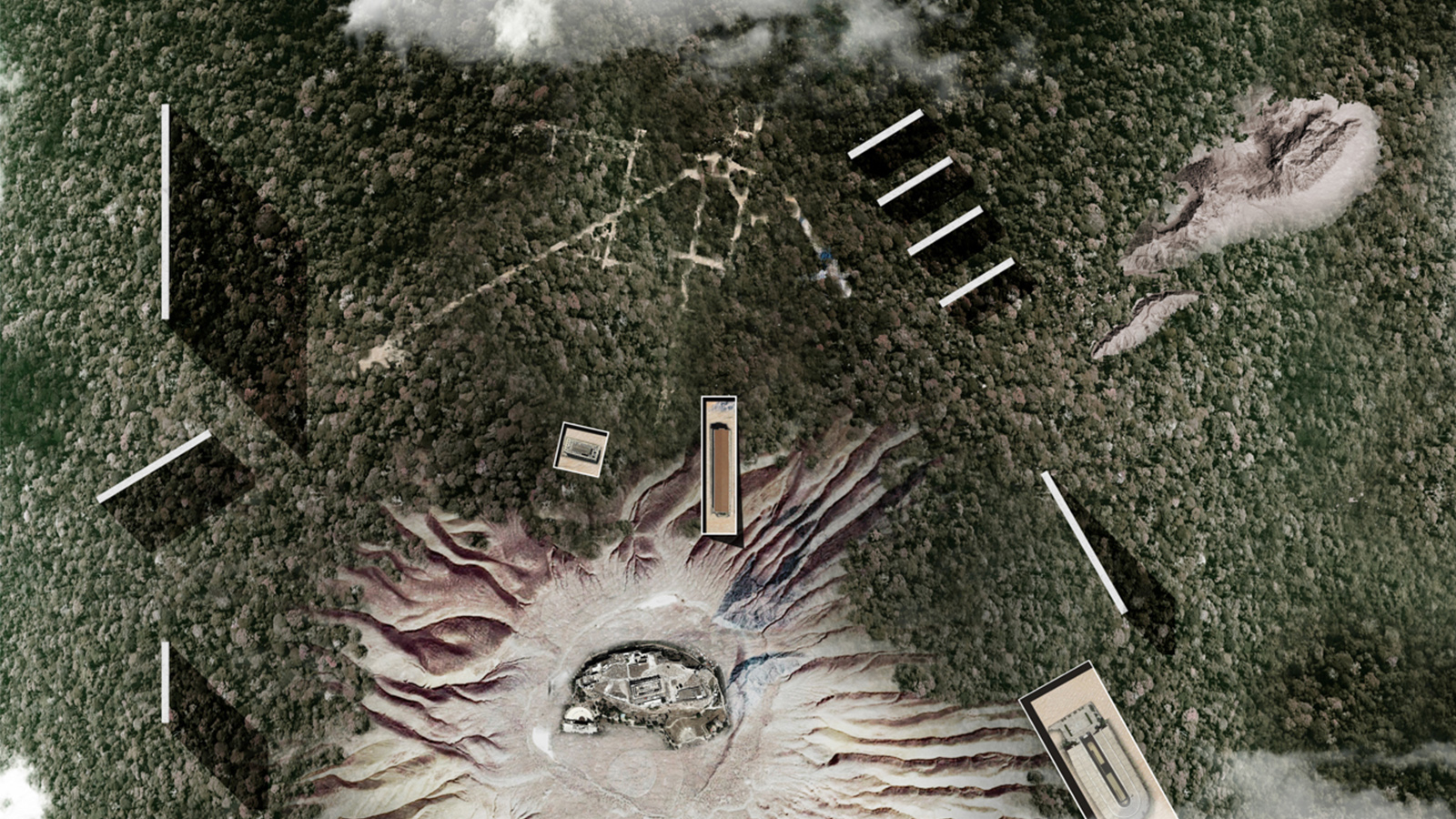
Monuments
Unlike the grammatical morpheme of the word monument – both in Greek and Romance languages – that refers to memory, the practices of maintenance and restoration of monuments are ‘future- oriented’1. Perhaps a headlong rush into the future is a way to avoid turning ‘the triumphs of civilization’ into ‘the studious collection of encumbrances which finally stifle the possibilities of adaptation, movement and effective improvement, and lead to its [the city’s] ultimate downfall’ as Mumford writes in 19372. If that is the case, then there is nothing new in the assumption that if the monument is an object of the future, then it passes through practices of prefiguration, ultimately entering into realms of representational order.
Now, if the persistent ingredient of memory is persistent materiality, then what will the monument in a future dominated by representation look like?
Let’s assume the following scenario:
VR takes over – In the course of time AR and VR technologies are perfected, their hardware parts become mass produced and therefore made accessible for all.
Synchronously, the ever-expanding scarcity in natural resources, already present since the latter half of the 20th century, leads to radical changes in artificial human habitats. For example, as access to building material diminishes over time, conventional structures are substituted by larger building blocks, cladded internally and externally only by reflective projection surfaces, suited to convey image and visual effects that simulate the long lost experience of tangible space -the minimum material element. Nature takes over what was known as the anthroposphere.
The immersive experience of the virtual is enough to keep what remains of humanity content. Yet, it is not long before boredom, this ‘mallady of happy people’8, takes over. Boredom, fueled by repetition relegates visual experience to banality.
As materiality is revalorized, the remnants of material civilization are elevated to artifacts. Common items, the same that ‘suffered humiliation in human hands’9 as Adorno used to say, are invested with totemic functions, set apart and safeguarded from non-human biological and geological agents. Alongside the great material monuments, in enclaves dedicated solely to the preservation of memory, ritual assemblages of everyday items are exhibited as archaeological findings attributed to the turbulent, yet transformative late capitalism period.
Installation & Visual Essay
RUINS OF AN EXTREME PRESENT (exh. @ Romantso), 2020
Y. Mantzaris & A. Papangelopoulos as STUDIO ENYO
